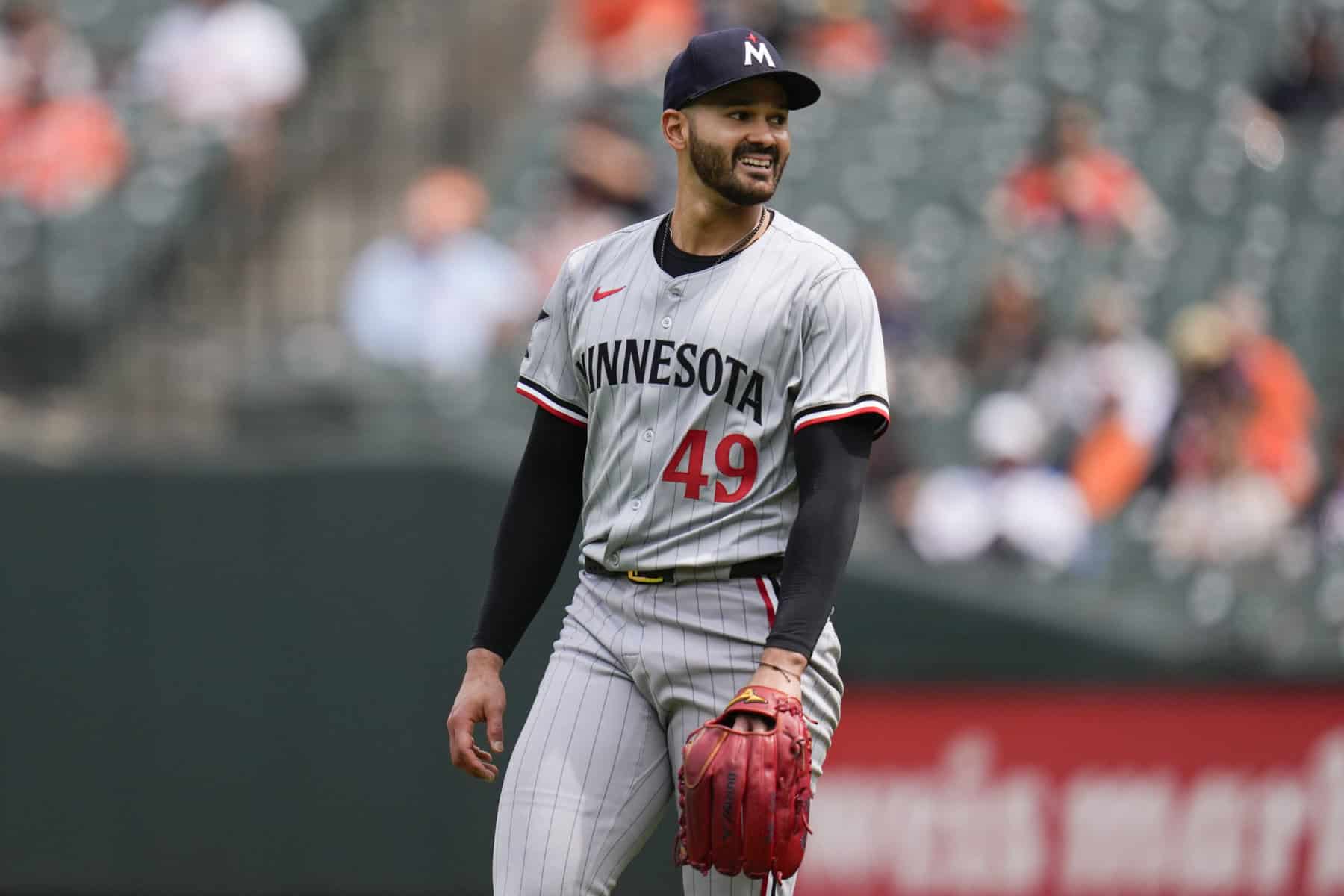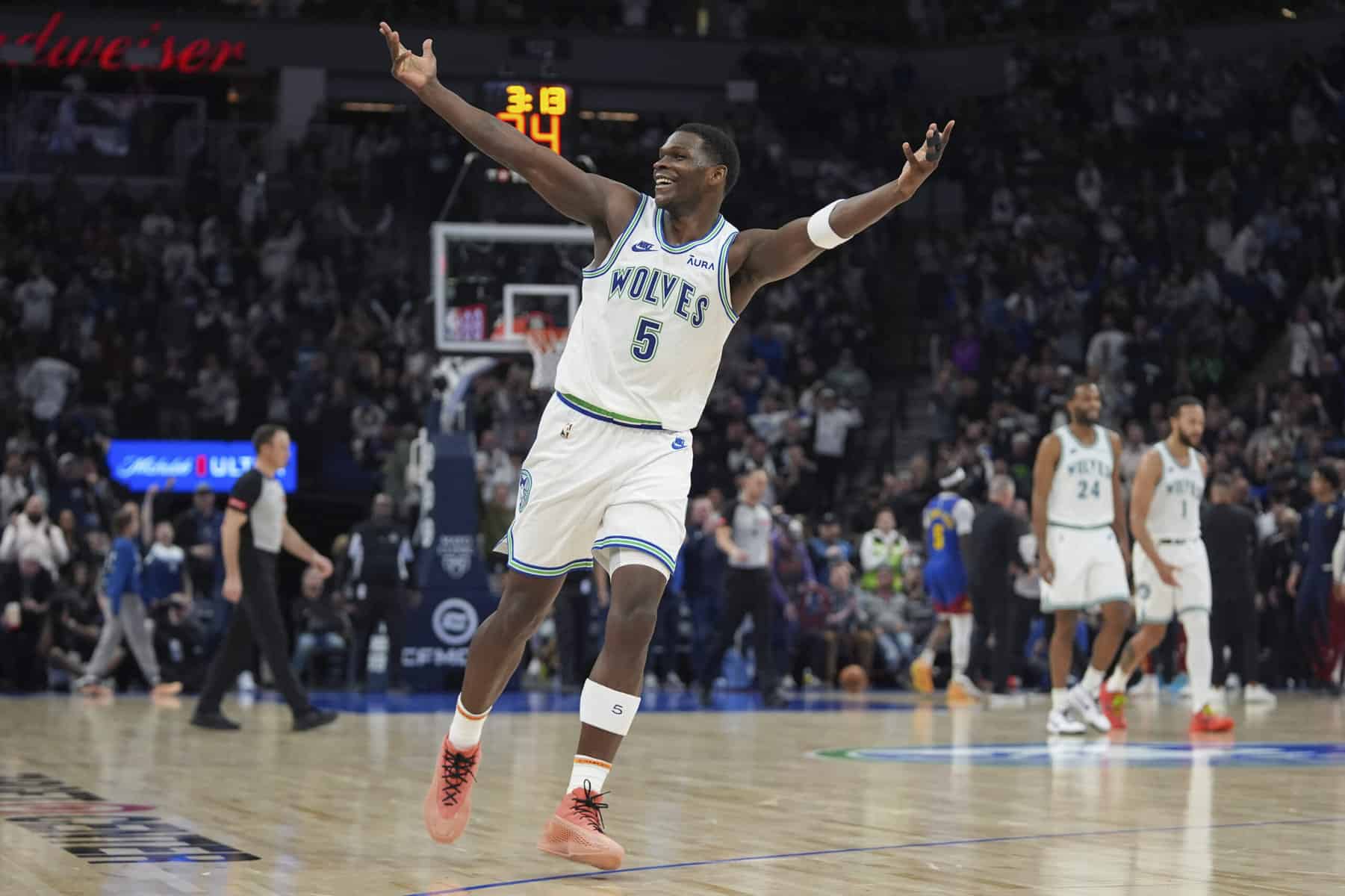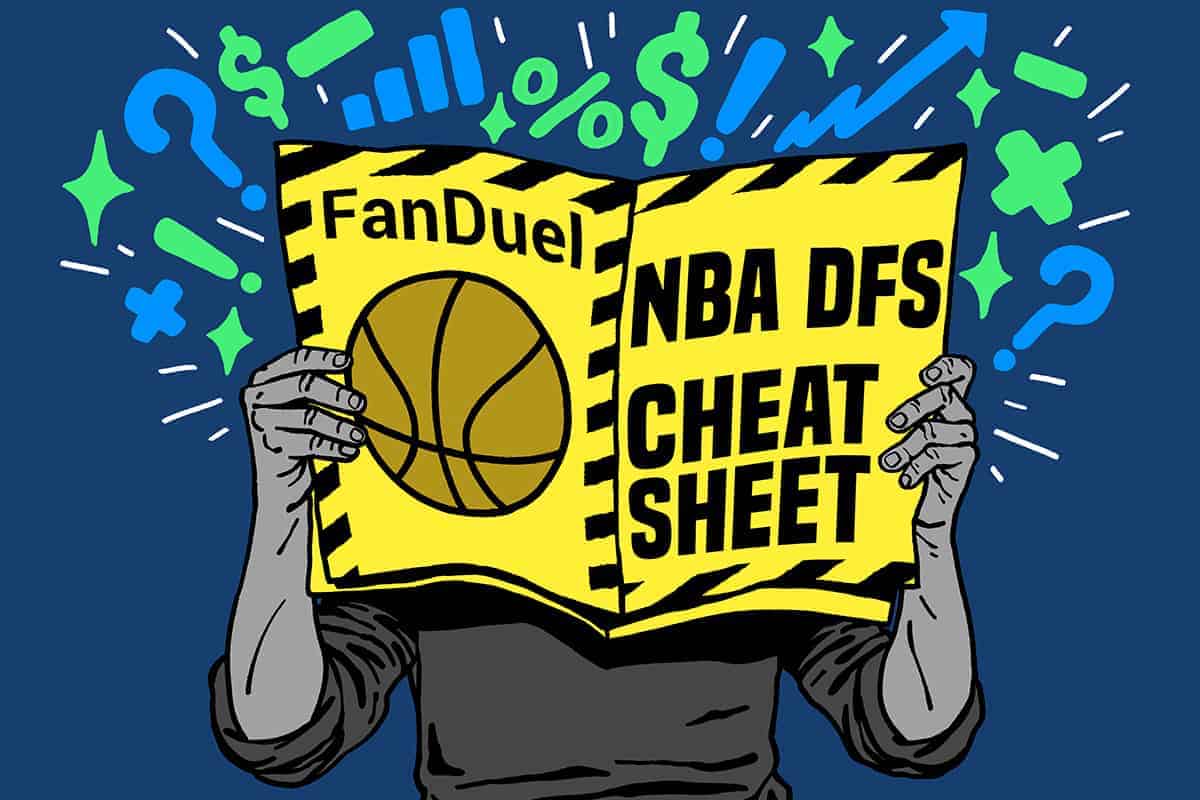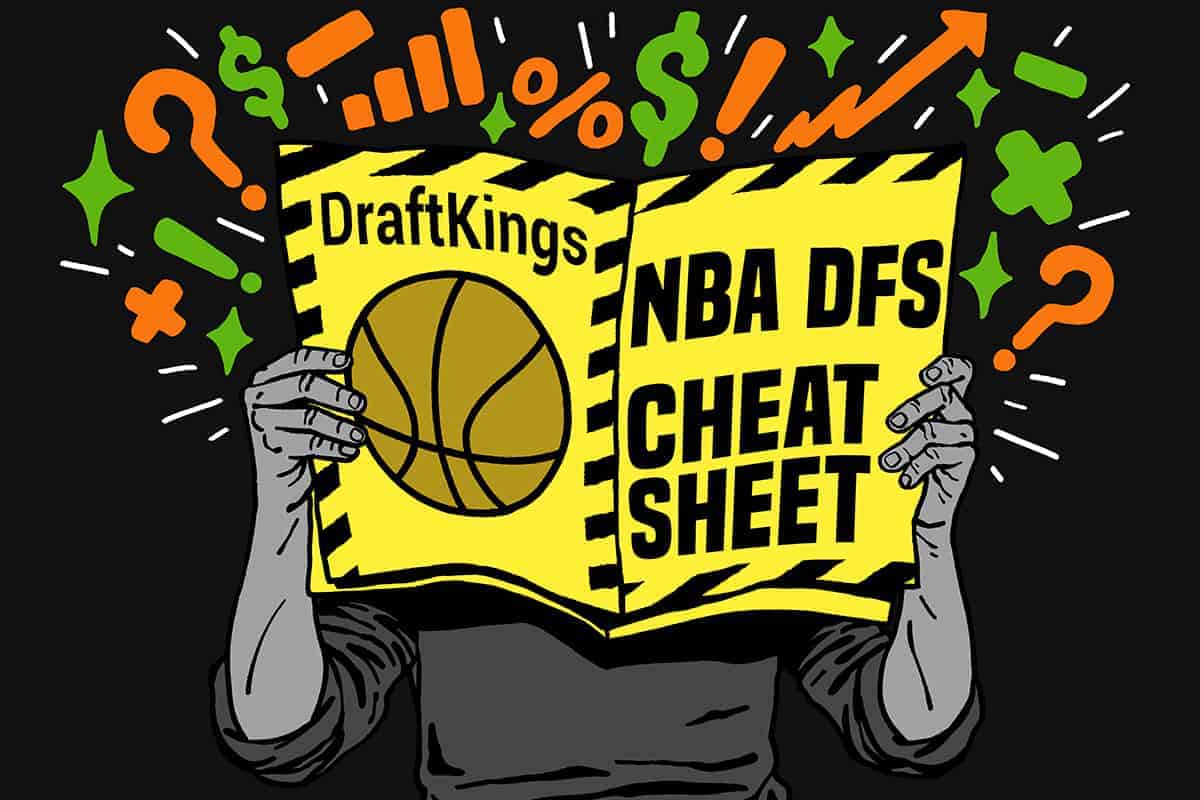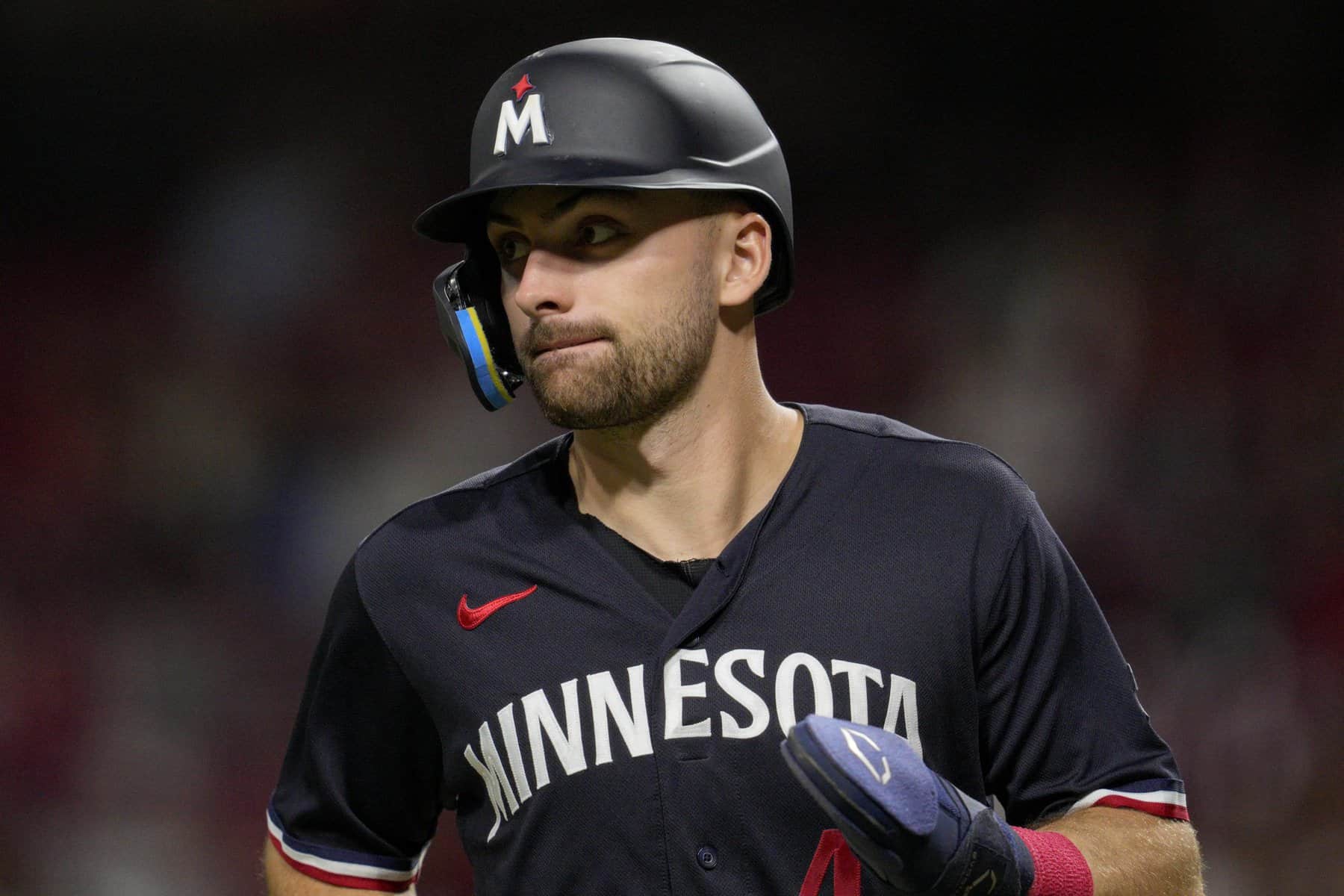For nearly a year now, I’ve been hosting the High Stakes podcast for Stokastic, interviewing DFS pros on a range of topics. There have been a lot of recurring themes on the show, but the most relevant for this article: DFS pros love NFL DFS Showdown.
That’s because a lot of casual NFL fans enter the Showdown fray as a way to have some action on island games. As a result, DraftKings and FanDuel offer enormous contests with generous prize pools. The contests become more difficult to win, too, when there are hundreds of thousands of entrants, but with a large portion of the new players being casual, the increase in difficulty pales in comparison to the increase in prize pools. It’s a tradeoff DFS pros will gladly make.
My goal with these Showdown articles — which I’ll be writing for each Thursday Night Football and Monday Night Football NFL DFS slate this season — is to help you attack the largest-field DraftKings GPP like a pro. There are three main components to discuss when it comes to Showdown, and I’ll break them down accordingly: Projection, Correlation and Differentiation.
Before reading this piece, you may find it helpful to read my evergreen piece about how to attack NFL Showdown GPPs more generally: https://www.stokastic.com/nfl/draftkings-showdown-simplified-tips-tricks-making-big-money-nfl-dfs-island-games-2022/
Week 6 NFL DFS Showdown: Commanders vs. Bears TNF
Projection
The goal in DFS is to make the lineup that puts up the most points and a natural starting point is looking at individual players who are likely to put up high scores or high point-per-dollar scores. Some pros run simulations or create their own projections to achieve this. Many others, like myself, rely on the Stokastic projections and tools to determine which players should be core pieces of our lineups. I primarily look at the base projections and the “Top Showdown Plays” Tool, which publishes results of 10,000 advanced simulations run by the Stokastic team.
Studs
These are simply the top projected players on the slate. I’d recommend having at least two of these players in just about every lineup you make tonight, either as captain or in a flex spot.
- Justin Fields ($10,000) has the highest projection on the slate at the third-highest salary.
- David Montgomery ($10,400) has the second-highest projection on the slate at the second-highest salary.
- Carson Wentz ($10,600) has the third-highest projection on the slate at the highest salary.
- Curtis Samuel ($8,200) has the fourth-highest projection on the slate at the sixth-highest salary. Samuel leads the Commanders with 43 targets this season and is second in routes run with 208. He has also had eight carries, all in the first three games of the season.
- Terry McLaurin ($9000) has the fifth-highest projection on the slate. McLaurin leads the Commanders in routes run with 222 and is second in targets with 31.
- Darnell Mooney ($7,600) has the sixth-highest projection on the slate. Mooney is the team leader for the Bears in both routes run, with 122, and targets, with 20.
Point-Per-Dollar Plays
These are just a few players who will be featured throughout my lineups due to their high projected points per dollar. At the same time, because I’ll typically have at least three studs in each lineup, the top points-per-dollar plays are often players I’ll be pivoting away from in some spots in favor of players who project a bit worse but will also garner lower ownership. I’m also excluding any player with a projection below three fantasy points from this list.
- Cole Turner ($200) made his NFL debut for the Commanders in Week 5, and he was targeted twice on 21 routes run. His projection barely exceeds the 3-fantasy-point threshold, but at $200, with similar opportunities he could easily pay off his price tag.
- Cam Sims ($1,400) played 59% of snaps for the Commanders in Week 5, a season high by a wide margin, and he is likely to see a similar workload tonight with Jahan Dotson still sidelined.
- Dante Pettis ($1,800) has played between 56% and 60% of snaps for the Bears in each of their past four games. He has also been targeted just five times on 89 routes run, making him a high-volatility play.
- John Bates ($3,000) played 59% of snaps for the Commanders with Logan Thomas out in Week 5 and could see a similar workload tonight with Thomas already ruled out. Bates has been targeted nine times over the past two weeks.
- Cole Kmet ($5,200) is second on the Bears with 109 routes run so far this season, and third in targets with 12.
- As is often the case, the kickers and defenses make for solid point-per-dollar plays. Both offenses have turned the ball over eight times through five games.
Correlation
In NFL DFS, correlations are endless, both positive and negative. Most are minor enough that they don’t necessarily need to be factored into lineups. If you want to give a boost to your running back’s defense, for example, that’s great; but running backs will frequently be optimal without the defense also being optimal, even in Showdown.
The only correlations that are almost mandatory to consider on Showdown slates involve quarterbacks. Particularly, non-rushing quarterbacks. That’s because of the scoring dynamics on DraftKings. On each passing play, the pass catcher scores more fantasy points than the quarterback. For example, if a quarterback throws a pass for 5 yards, he’ll get 0.2 fantasy points — 1 fantasy point per 25 yards passing, divided by five. The receiver will get 1.5 fantasy points — 1 point per reception, plus half a point for 5 yards receiving . The quarterback also only gets 4 points per passing touchdown, while the receiver gets 6 points for a receiving touchdown.
The quarterback is also generally one of the most expensive players on his team. Thus, more often than not he will need to be his team’s highest fantasy point scorer to be the optimal captain. Outside of rare occasions where the quarterback scores fantasy points by passing to a player who is not in the DraftKings player pool, or gets points as a receiver on a trick play, there are essentially just two ways for the quarterback to be the highest-scoring player on his team: adding fantasy points via rushing, or spreading the ball around to multiple pass catchers.
Some general thoughts:
- If you play a quarterback at captain, and he does not have rushing upside, and he is the most expensive player on his team, you will almost always want to have multiple of his team’s pass catchers in the flex. This is also largely true if the quarterback is only slightly less expensive than the most expensive pass catcher on his team.
- If you play a quarterback at captain, and he has moderate rushing upside, you can consider playing just one of his pass catchers in the flex — but multiple may still be preferred, depending on the extent of that rushing upside. The quarterback’s price may also come into play here; the more expensive he is, the more likely you’ll need to have multiple pass catchers in the flex.
- If you play a quarterback at captain, and he has major rushing upside, you don’t necessarily need to play any pass catchers in the flex. This is relatively uncommon, and only applies to a few quarterbacks.
- If you play a quarterback in the flex, and he does not have rushing upside, you will generally want to have at least one of his pass catchers elsewhere in the lineup, either at captain or in another flex spot.
- If you play a quarterback in the flex, and he has moderate to high rushing upside, you don’t necessarily need to include one of his pass catchers elsewhere in the lineup. But there will always be positive correlation there between a quarterback and his pass catchers.
Some game-specific thoughts:
- IF you play Fields: Fields is more expensive than any of his primary pass catchers. He has also rushed for more than 100 yards just once in his career and has just three career rushing touchdowns. Still, he has rushed at least seven times each game this season and clearly has the upside for a big rushing week. He could be used at captain or in a flex spot with zero Bears pass catchers, but more likely if he is the optimal captain at least one Bears pass catcher will be in a flex spot. Montgomery and Khalil Herbert have combined for 15 targets so far this year, so while they can be considered “pass catchers,” they are not the strongest options to pair with Fields.
- IF you play Wentz: Wentz is more expensive than all of his pass catchers. He has rushed for 77 yards this year after rushing for just 215 yards and one touchdown over 17 games last year. Thus, generally, Wentz will need to be paired with at least one Commanders pass catcher somewhere else in the lineup, and multiple if used at captain. McKissic and Gibson have both been pretty involved in the passing game, with 29 and 20 targets, respectively. Both can be used as pass catchers to pair with Wentz.
Differentiation
Making highly projected lineups with smart correlations will separate you from the lowest level Showdown players, but there are many very smart casual players as well. Differentiation is the last step to separating pros from Joes.
In just about any DFS GPP, finding low-owned gems is key because lower ownership reduces the field of lineups you’re competing against when the player has a 99th-percentile outcome. Taking it to the extreme, just as a thought exercise, let’s say that Montgomery scores 100 fantasy points tonight. You’re not just going to need him; you’ll need him in the captain spot (150 fantasy points). If 20,000 lineups in your contest have Montgomery in the captain spot, you’ve essentially reduced the field of lineups you’re competing with to 20,000. If only 200 lineups have Montgomery at captain? Now we’re talking.
On NFL Showdown slates there is an additional factor for large-field GPPs. We don’t just want to find seldomly used players; we want to find seldomly used LINEUPS. Why? Well, I’ll give you two examples from last year:
- On Sept. 20, 2021, DraftKings had a Milly Maker for the Packers vs. Lions tilt, but the top lineup was duplicated 231 times. Rather than winning a million dollars, the users who entered those 231 lineups had to split the top 231 prizes, for just a bit over $6,000 each. That’s despite having everything go their way, which requires an extreme amount of luck.
- On Oct. 11, 2021, we saw the other end of the spectrum: user rcoho1984 played a unique lineup in the Ravens vs. Colts Milly Maker, taking home not just a million dollars but a ticket to the Tournament of Champions.
If you’re going to win — which takes a lot of luck, regardless of how well your lineup projects — I’d suggest making it count. I’m not necessarily concerned with making an entirely unique lineup like rcoho1984 did every single time, but I aim to be a lot closer to their unique lineup than those that were duplicated 231 times.
Some Easy Tricks
Low-owned players. Yup, even if you’re using other tricks to get unique, it’s still a good idea to play a few players who won’t be getting much ownership. Some low-owned players to consider:
- N’Keal Harry ($200) is set to make his season debut with the Bears. It is not yet clear what his role will be, but with just 86 points scored so far this year, the Bears offense may be looking for some changes.
- Ihmir Smith-Marsette ($600) played a season-high 38% of snaps for the Bears in Week 5 and could pay off his salary with one splash play.
- Velus Jones Jr. ($2,600) made his career debut for the Bears in Week 5, and despite playing just three snaps, he scored a touchdown on his lone target, a play designed for him near the end zone. The Bears could look to get the speedy rookie more involved going forward.
Embrace lineups missing some correlation pieces or even with some negative correlation. Generally, highly correlated lineups will be over-owned, whereas the field will avoid negative correlation at all costs. If you want to read my reasoning, check out the evergreen piece I linked near the top of this page. In some of my lineups, I like to see the following:
- Quarterback against opposing Defense.
- Pass Catcher at Captain without including the QB at Flex.
- Multiple Running Backs from the same team in a lineup.
Latest NFL DFS Content
- Want to Learn How to Win a DraftKings Milly Maker With Stokastic Sims? Steve Buzzard Will Tell You How
- PrizePicks, Sleeper & Underdog Cheat Sheet: Best More/Less Picks Today for NFL (February 11)
- DraftKings NFL Cheat Sheet: Super Bowl Sims Picks | George Kittle
- NFL Super Bowl 58 DFS Picks: 49ers vs. Chiefs (February 11)
- NFL DFS Captain Picks for Super Bowl 58: Rashee Rice, George Kittle & More
- Stokastic DFS on Youtube
Leave salary on the table. This is the easiest way to lower your duplicates. Casual players assume that if they have salary left over, they should upgrade. The problem with this approach is that it almost inevitably leads to highly duplicated lineups. How much salary should you leave on the table? That’s up to you. If it’s less than $600 and you haven’t gotten extremely unique with player selections and weird correlations, it’s likely you’ll have to split any winnings with many other entries.
Thanks for reading to the end of this article! If you appreciate this free content and want to see more of it every day, you can help us out by sharing this article on social media!
[NFLPAGE]

